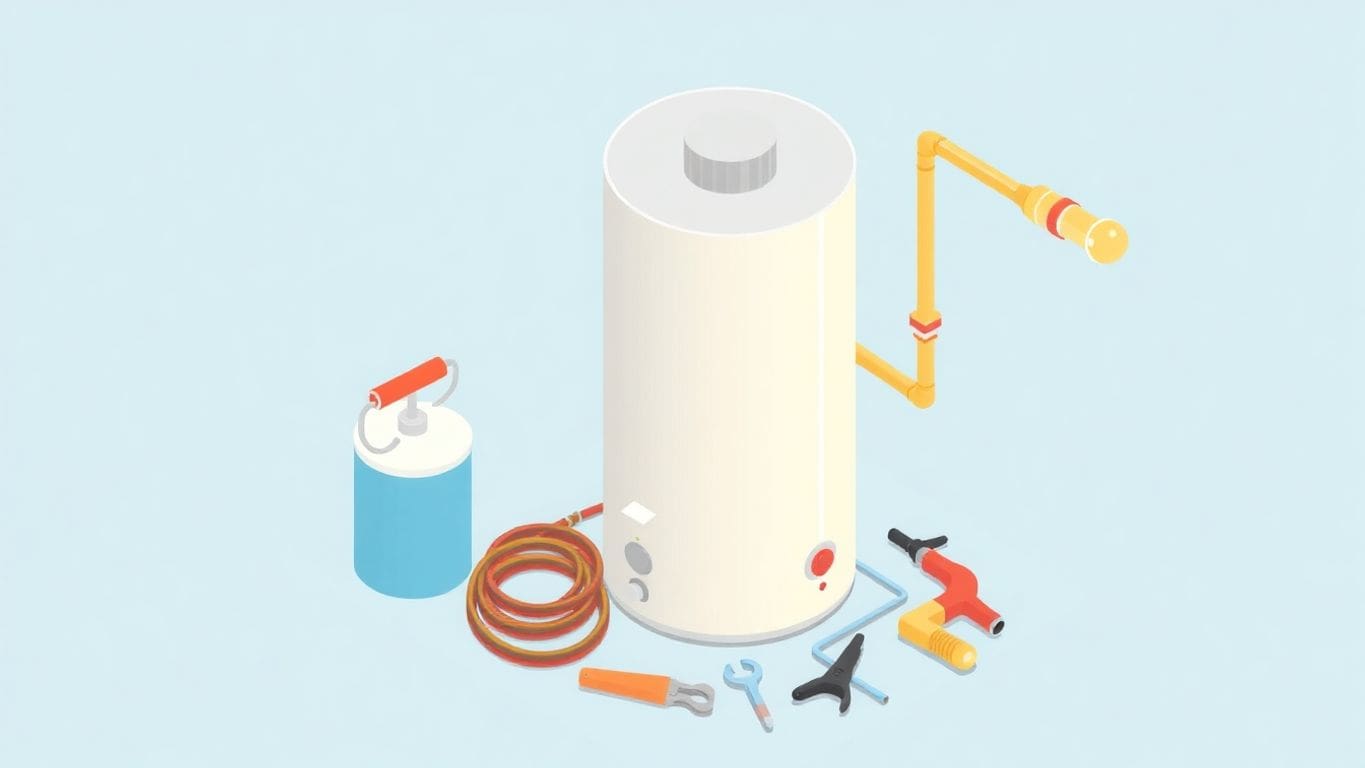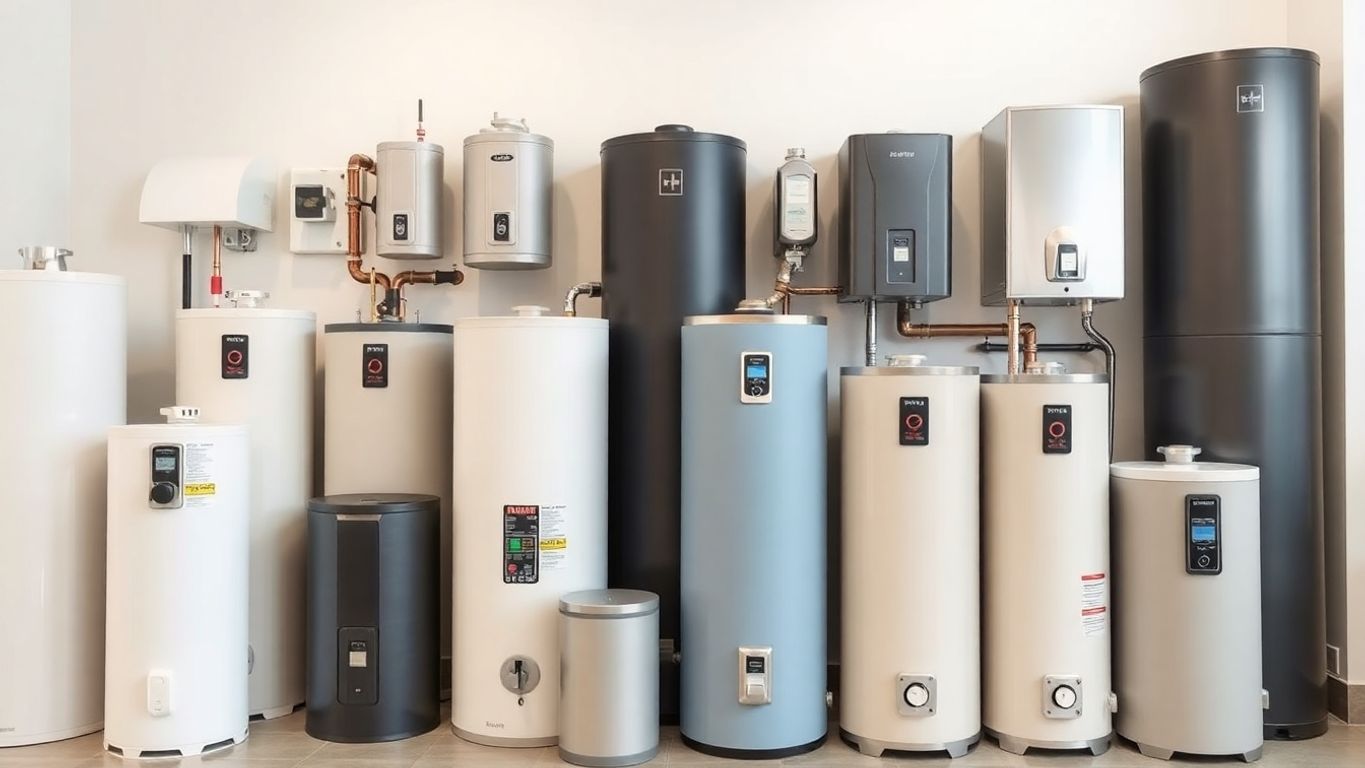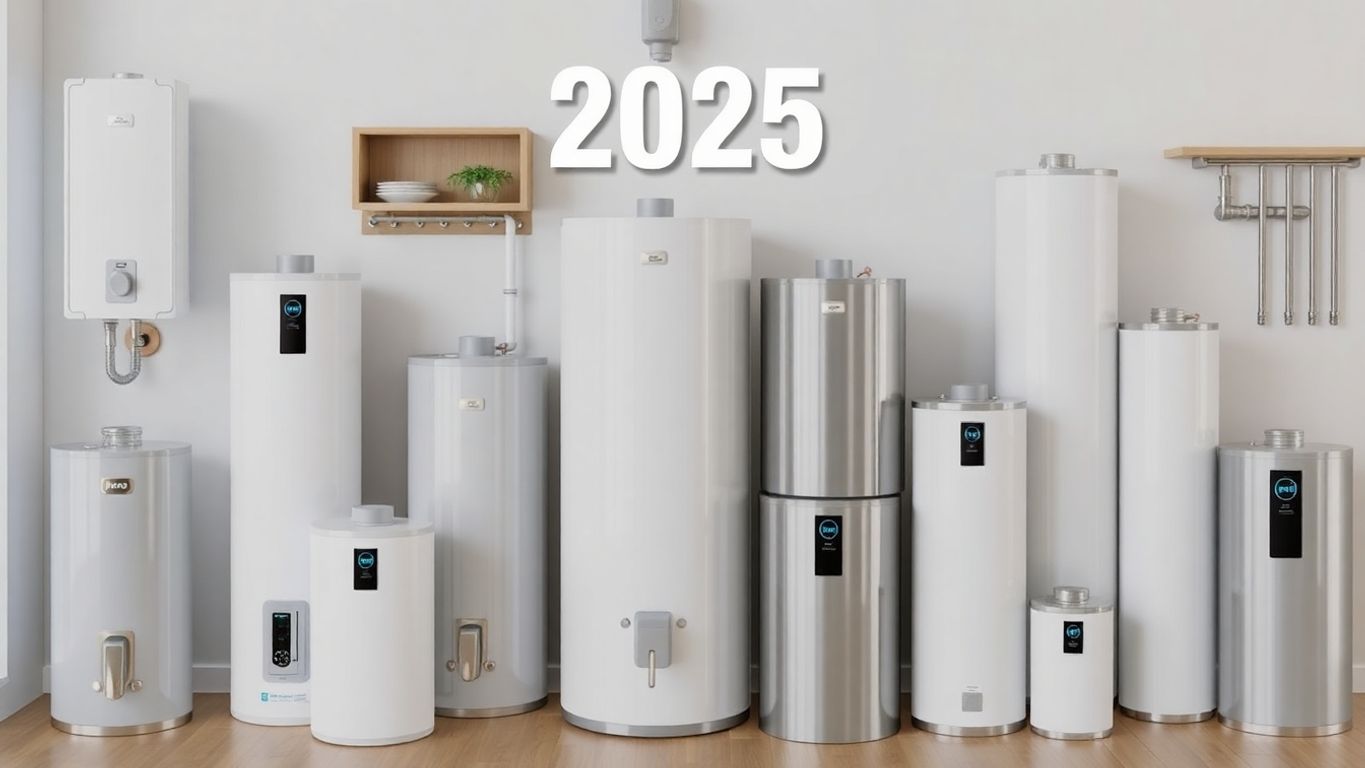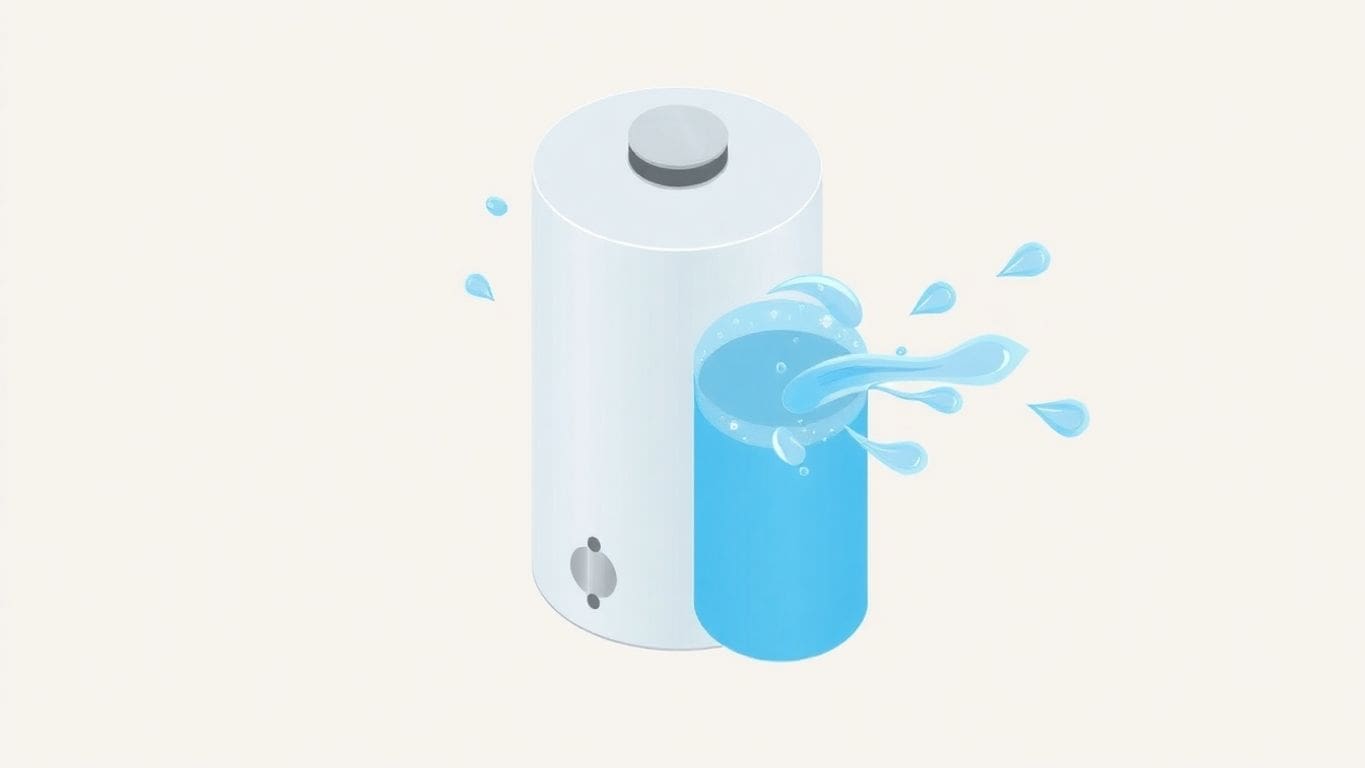
Ever tried to figure out how many companies make water heaters? It’s not as straightforward as you’d think. The water heater industry is a bit of a puzzle, with a mix of big names and smaller players all over the map. Whether you’re curious about who makes your tankless heater or why energy-efficient models are all the rage, this article is here to break it down for you. From the big guns like A.O. Smith and Rheem to the growing demand for smart home tech, let’s dive into what makes this industry tick in 2025.
When you think about water heaters, a few big names come to mind. A. O. Smith Corporation, Bradford White Corporation, and Rheem Manufacturing Company are the top dogs. These companies have been around for ages and are known for making reliable products. They compete fiercely, mainly on price and features, to win over customers. If you’re in the market for a water heater, chances are you’ll come across these brands.
Water heaters come in different shapes and sizes, each suited for specific needs. The most common types are:
In the U.S., water heater manufacturers are sprinkled across several states. You’ll find many of them in places like Alabama, Georgia, Michigan, New York, North Carolina, South Carolina, and Tennessee. These areas have a mix of resources and skilled workers that make them ideal for production. But remember, many companies also have plants overseas to keep costs down and reach more markets.
The water heater industry is a small but mighty part of the economy. It plays a crucial role in keeping our homes and businesses running smoothly, providing hot water whenever we need it. Even if your current water heater is still chugging along, it’s worth knowing about these companies and the types they offer, especially if you’re planning to upgrade soon. Assess your water heater’s condition if it’s getting old to avoid unexpected issues.

In 2025, there are hundreds of water heater manufacturers around the world. The industry is largely dominated by a few big names, but smaller companies are emerging too. Most of these manufacturers are based in countries with strong industrial bases like the United States, China, and Germany. In the U.S. alone, the water heater manufacturing industry is valued at around $3.1 billion.
The water heater industry has been growing steadily. More homes and businesses mean more demand for water heaters. New technologies like tankless and solar water heaters are also driving growth. People are looking for efficient, eco-friendly options, and manufacturers are stepping up to meet these needs.
Several factors affect how many companies make water heaters:
Water heaters are essential for daily life, but they don’t last forever. Knowing when to replace your heater can save you from unexpected cold showers. Learn more about when to replace your water heater.
A. O. Smith Corporation is a big name in the water heater world. They make lots of different types of heaters, from small ones for homes to big ones for businesses. A. O. Smith is known for making energy-efficient products, which means they help save on electricity bills. They also focus on smart technology, so their heaters can connect to home automation systems. This makes it easy to control your water heater from your phone or computer.
Bradford White Corporation is another important player. They are unique because they are owned by their employees. This means everyone who works there has a say in how things are run. Bradford White makes a wide range of water heaters, including ones that use renewable energy sources like solar power. They are also known for their focus on customer service, making sure people are happy with their products.
Rheem Manufacturing Company is known for making reliable water heaters that last a long time. They offer a variety of models, including tankless water heaters, which heat water only when you need it. This can save a lot of energy compared to traditional models. Rheem also works on making their products more eco-friendly, which means they try to reduce their impact on the environment.
Did you know? Most water heaters are hidden away in basements or closets, but they play a key role in our daily lives. Keeping your water heater in good shape can prevent unexpected cold showers.
In recent years, energy-efficient water heaters are becoming a big deal. People want to save money on their energy bills, so they’re looking for water heaters that use less power. These models are designed to heat water without using as much electricity or gas, which is great for both your wallet and the environment. Plus, some of these heaters might even qualify for rebates or tax credits!
Smart technology is changing everything, and water heaters are no exception. Imagine controlling your water heater from your phone. That’s what smart water heaters let you do. You can adjust the temperature, check energy usage, and even get alerts if something goes wrong. This means you can troubleshoot issues right from your device, making it super convenient.
More people are thinking about the planet these days. Water heater companies are catching on by making more eco-friendly products. They’re using materials that are better for the environment and designing heaters that last longer. This means less waste and a smaller carbon footprint. Some heaters even use renewable energy sources like solar power, which is pretty cool.
As water heaters evolve, they’re not just about heating water anymore. They’re about saving energy, using smart tech, and being kind to the Earth. This shift is changing how we think about our homes and the appliances we use every day.
Imagine trying to build a puzzle, but every time you reach for a piece, it’s not there. That’s what supply chain disruptions feel like for water heater manufacturers. These disruptions can slow down production and cause delays. Sometimes, parts are stuck in transit or not available at all. Manufacturers have to find quick solutions to keep things moving.
Regulations are like the rules of a game. They keep things fair and safe, but they can also be tricky. Water heater manufacturers must follow many rules to make sure their products are safe and efficient. This can be tough because the rules can change. Manufacturers need to stay updated and make sure everything is in order, which can be a lot of work.
The water heater market is like a crowded playground. There are many players, and everyone wants to be the best. This means manufacturers must work hard to stand out. They need to offer better prices, new features, or improved designs. It’s a constant challenge to keep up and stay ahead of the competition.
Water heater manufacturers face a tough road. They must juggle supply issues, follow strict rules, and compete in a busy market. Yet, they keep pushing forward, finding ways to overcome these challenges and succeed.
Tankless water heaters are getting a lot of attention these days. They heat water only when you need it. This means they use less energy compared to traditional heaters. This can save you money on your energy bills. Plus, they take up less space, which is great if you have a small home. People are really starting to like these for their efficiency and compact size.
Many new water heaters are now working with renewable energy sources like solar or wind. This is good news for the environment because it means less pollution. Using renewable energy can also help you save on energy costs. Here are some benefits of integrating water heaters with renewable energy:
Water heaters are becoming part of the smart home trend. This means you can control them with your phone or a smart device. Imagine adjusting your water heater settings without leaving your couch! Smart heaters can also alert you if something’s wrong, helping you avoid bigger problems later.
Smart technology in water heaters not only offers convenience but also enhances safety and efficiency. It allows you to monitor and adjust settings from anywhere, giving you peace of mind.
With all these innovations, upgrading your old water heater could be a smart move. If your water heater is 16 years old, it might be time to consider these modern options for better performance and energy savings.

Have you ever thought about how much space your water heater takes up? Tankless water heaters are becoming super popular because they save space and energy. Unlike traditional heaters, they heat water only when you need it. So, you don’t have to wait for a tank to fill up. More people are choosing these because they want to save on energy bills and have hot water on demand.
When you’re shopping for appliances, you’ve probably seen the Energy Star label. This label means the product is really good at using less energy. Water heaters with this label are in high demand because they help you save money on electricity. People are getting smarter about their energy use, and these products help make homes more eco-friendly.
Different places have different needs when it comes to water heaters. In colder areas, people might need stronger heaters to keep up with the chill. In warmer places, folks might go for smaller, more efficient models. Here’s a quick look at what people prefer:
As we look to the future, the water heater market is all about energy efficiency and meeting consumer needs. It’s exciting to see how these trends will shape what we use in our homes.
Water heaters are in almost every home and building, so their production has a big impact on local economies. Factories that make water heaters provide jobs and help the local economy grow. These factories often support other local businesses too, like suppliers and maintenance services.
The water heater industry creates thousands of jobs. From factory workers to office staff, many people rely on this industry for work. With more homes and buildings being built, there’s always a need for more water heaters. This means more jobs! Here’s a quick look at how the industry supports employment:
Water heaters aren’t just used locally. Many are shipped around the world. This means the water heater industry plays a role in global trade. Here’s how it works:
The water heater industry is like a hidden engine, quietly powering homes and businesses while also driving economic growth. It’s not just about keeping water warm; it’s about supporting communities and creating opportunities.
By understanding how this industry fits into the bigger picture, you can see why it’s so important.
The water heater industry is set to grow steadily over the next few years. Experts believe the market will expand due to increasing demand for energy-efficient models. As more homes and businesses replace old units, sales are likely to rise. This growth is expected to continue, driven by both new construction and replacement needs.
There’s a lot of buzz about emerging markets. Countries with growing economies are starting to invest more in infrastructure. This means more homes and buildings needing water heaters. Manufacturers have a chance to tap into these new markets. They can offer products that suit local needs and preferences.
Despite the growth, there are challenges. Supply chain disruptions can slow down production. Also, stricter environmental rules might require companies to change how they make water heaters. Competition is tough too. Staying ahead means constantly innovating and improving products.
The future looks bright for water heater manufacturers, but they must navigate challenges carefully to seize opportunities in a changing market.
In summary, while the path ahead has its hurdles, the potential for growth and expansion in the water heater industry remains strong. Keeping an eye on emerging trends and adapting to new challenges will be key to success.
The water heater industry makes devices that heat water for homes, offices, and factories. They come in different sizes and are powered by gas or electricity.
The major companies include A. O. Smith Corporation, Bradford White Corporation, and Rheem Manufacturing Company.
The industry is growing slowly, with more people buying new heaters for their homes and businesses.
There are several types, including tankless, heat-pump, and solar water heaters.
Water heaters are made in several states, including Alabama, Georgia, and Michigan.
It helps keep homes and businesses warm and provides jobs in manufacturing.
They face challenges like supply chain issues, keeping up with regulations, and competition among top companies.
New trends include energy-efficient models and smart technology that connects to home systems.



